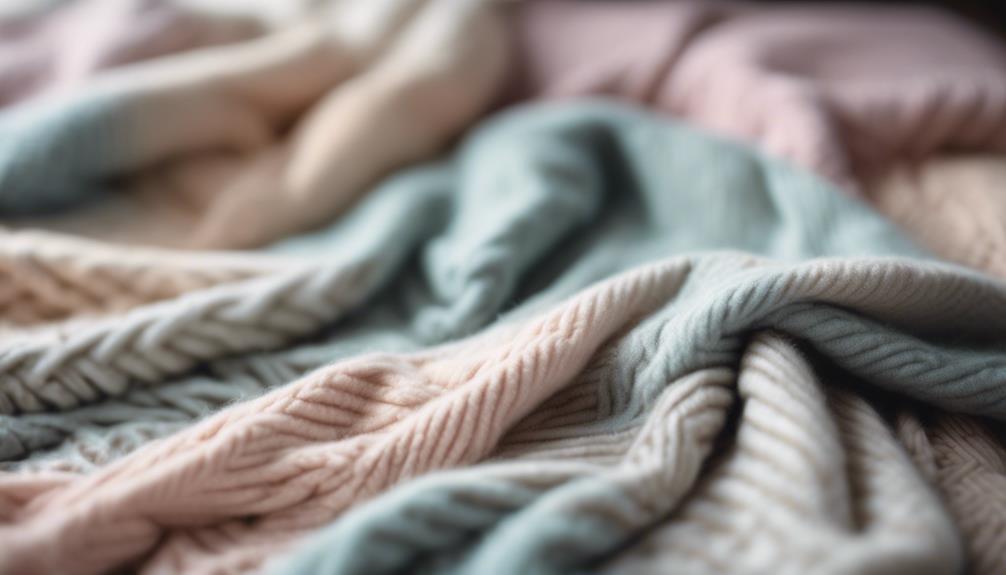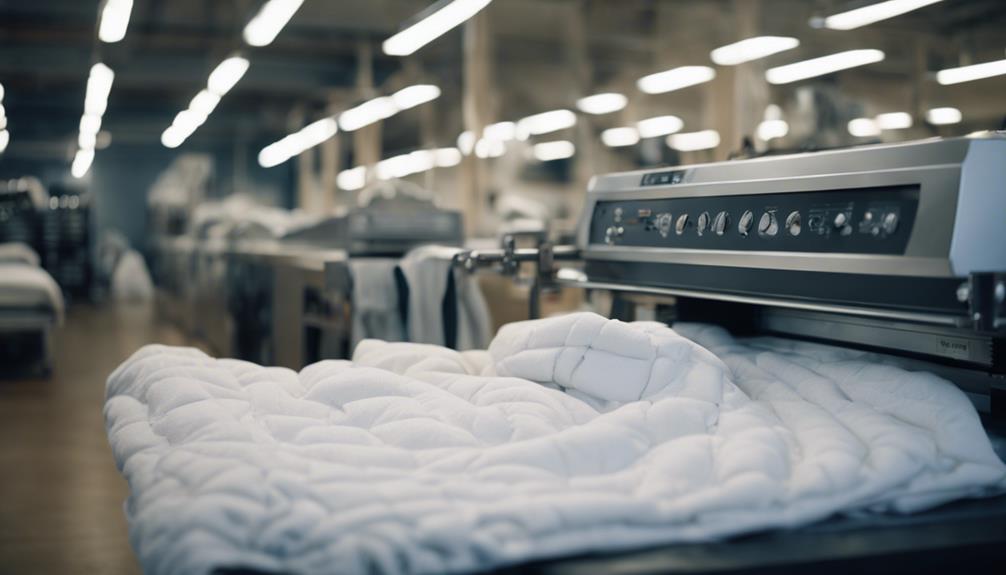Washing a comforter in a portable washer can pose some challenges because of size restrictions and limited settings. The small drum size may not accommodate queen comforters properly, resulting in uneven cleaning. To address this issue, make sure to evenly spread out the comforter inside the washer. Avoid overloading and consider adding tennis balls for agitation. It is crucial to ensure proper drying as well. If you are looking for more tips and alternative solutions on how to effectively handle these challenges, there are resources available for you to explore.
Key Takeaways
- Consider comforter size and washer capacity for proper fit.
- Distribute comforter evenly to avoid tangling during wash.
- Use appropriate settings for water temperature and cycle duration.
- Select detergent compatible with comforter material for effective cleaning.
- Ensure thorough drying before storage to prevent mildew.
Limitations of Portable Washers for Comforters
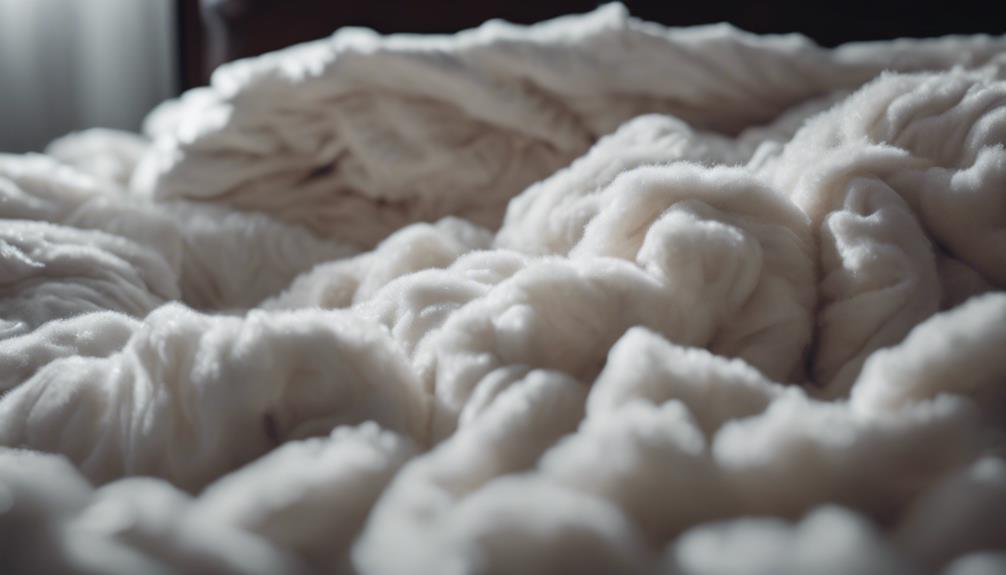
When washing a comforter in a portable washer, we face various limitations that can impact the cleaning process effectively, especially when dealing with a queen size comforter. The drum size of portable washers may not be big enough to comfortably fit a queen size comforter, making it challenging to wash a queen effectively. Due to this limited capacity, the comforter may not have enough space to move around freely during the washing cycle, potentially leading to uneven cleaning or tangling issues.
Additionally, portable washers may lack specialized settings or cycles specifically designed for washing bulky items like comforters, further complicating the cleaning process. In addition, rinsing and drying a queen size comforter in a portable washer can be difficult due to size constraints, potentially affecting the overall cleanliness and freshness of the comforter.
These limitations highlight the importance of carefully considering the size of the comforter and the capacity of the portable washer before attempting to wash a queen size comforter in such a machine.
Tips for Washing Comforters in Portable Washers
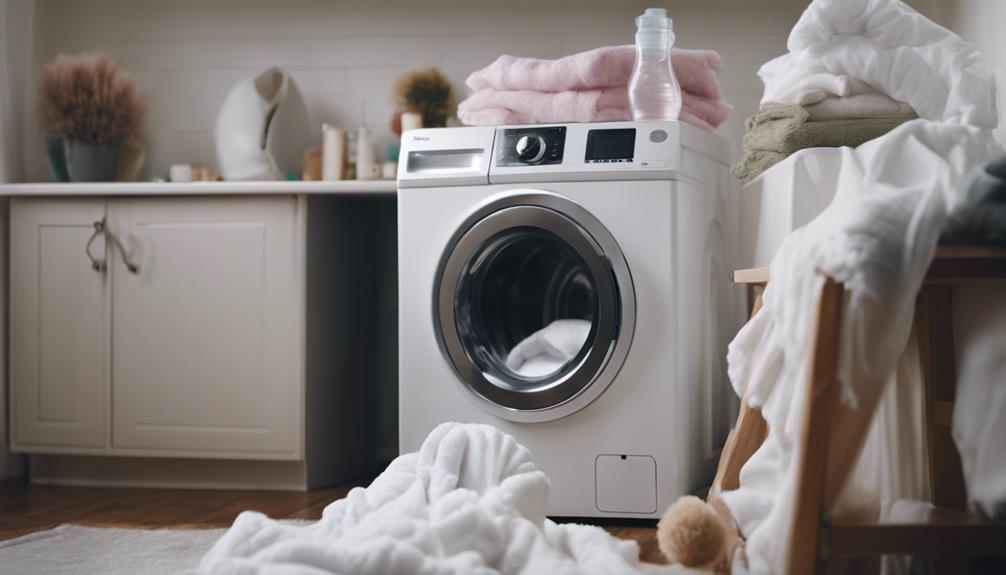
To effectively wash comforters in portable washers, proper distribution of the comforter inside the machine is crucial to prevent tangling and guarantee thorough cleaning.
When washing a queen size comforter in a portable washer, it's vital to make sure that the comforter is spread out evenly to allow for proper washing. Avoid folding or crumpling the comforter to prevent uneven cleaning and potential damage to the fabric.
Consider adding a couple of clean tennis balls into the wash to help agitate the comforter and ensure a more thorough clean. These balls can prevent the comforter from clumping together during the wash cycle, resulting in a more evenly washed comforter.
Alternatives to Washing Comforters in Portable Washers
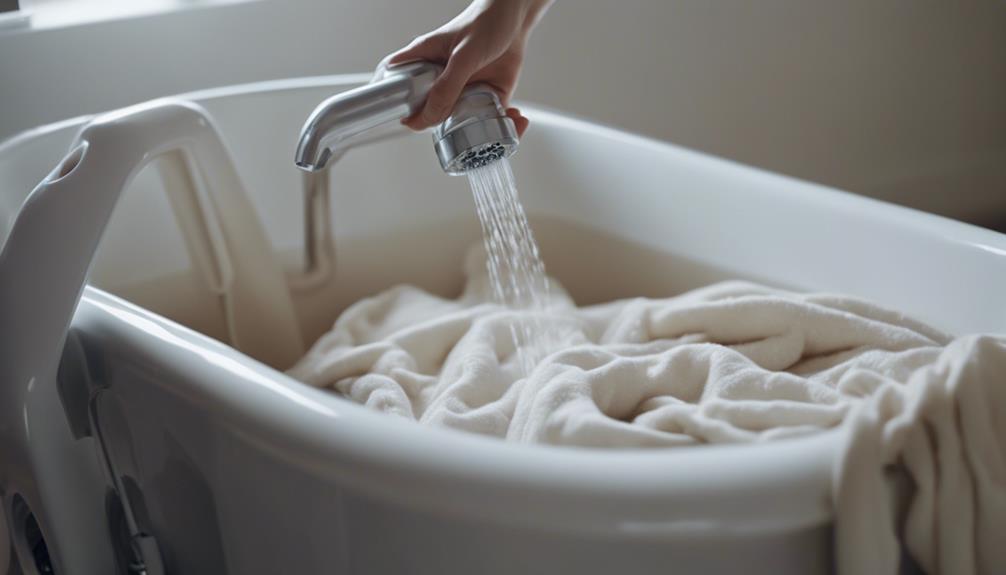
Considering different washing methods for comforters beyond portable washers, laundromats with industrial machines offer an efficient solution for cleaning multiple comforters simultaneously. When I need to wash my queen comforter and my portable washer isn't large enough, heading to a laundromat can be a practical choice. These facilities are equipped with industrial-sized washers that can accommodate bulky items like comforters with ease.
Furthermore, using the delicates cycle on top load washers without agitators can provide a gentle yet thorough cleaning for delicate comforters. Front load washers are also a viable option, as they can handle comforters on a bulky setting, ensuring a deep clean. If my comforter is too tight in the portable washer, opting for dry cleaning may be a suitable alternative.
It's essential to evaluate the washer type and size to determine the best method for washing comforters effectively, ensuring they come out fresh and clean.
Best Practices for Comforter Washing
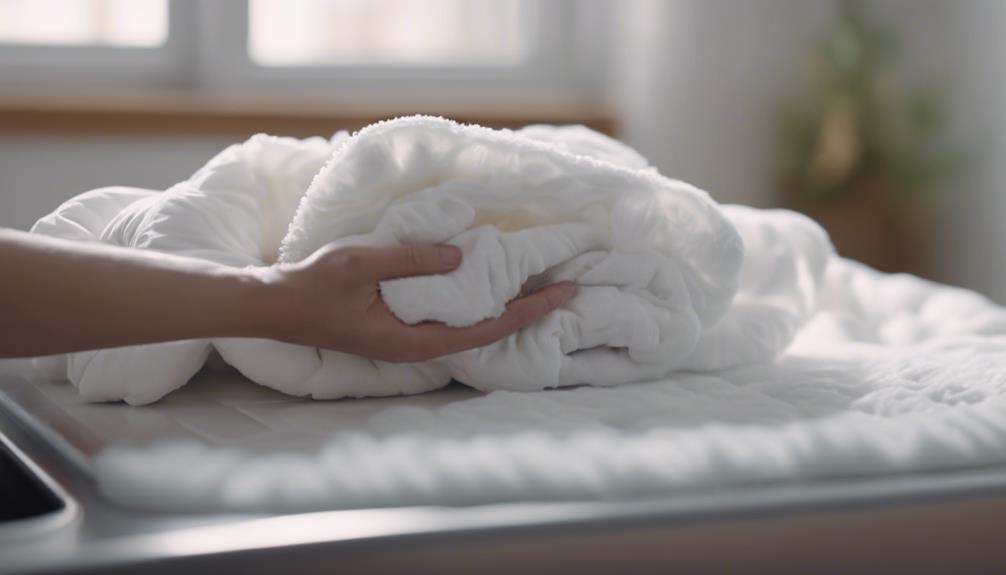
Ensuring proper distribution of the comforter inside the portable washer is key to achieving a thorough and efficient cleaning process. When washing a queen size comforter in a portable washer, it's important to avoid overloading the machine. By distributing the comforter evenly, you can prevent tangling and promote a more effective wash. Selecting the appropriate setting on the washer, such as delicate or bulky, depending on the size and material of the comforter, can also enhance the washing outcome.
After the wash cycle is complete, it's essential to dry the comforter properly. Following the manufacturer's guidelines and care instructions for both the comforter and the portable washer is vital for successful washing outcomes. When drying the comforter, make sure it's completely dry before storing or using it again. By following these best practices for washing and drying your comforter in a portable washer, you can maintain its quality and cleanliness effectively.
Ensuring Proper Cleaning of Comforters in Portable Washers
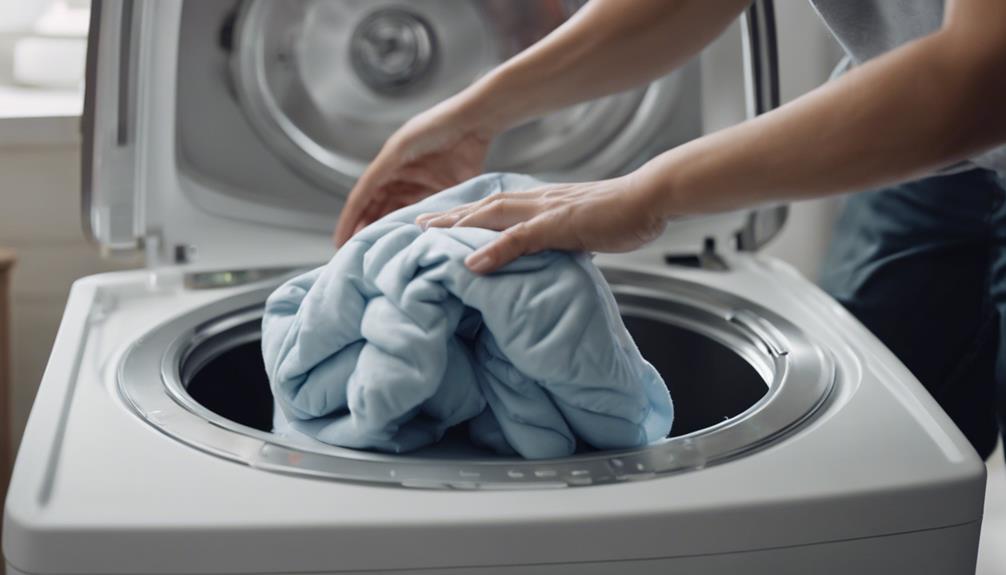
Properly distributing the comforter inside the portable washer is essential for achieving best cleaning results. When washing a queen size or king size comforter in a portable washing machine, it's important to make sure that the comforter is evenly spread out to prevent clumping or uneven cleaning. This can be done by gently arranging the comforter inside the washer, making sure it isn't folded or bunched up in one area.
Furthermore, using the appropriate settings on the washing machine is key to effectively cleaning the comforter. Selecting the right water temperature, cycle duration, and spin speed can help in thoroughly washing the comforter without damaging the fabric. Additionally, using a suitable detergent that's compatible with the comforter material is essential for achieving best cleaning results.
Throughout the wash cycle, it's advisable to periodically inspect the comforter to check for any issues such as remaining stains or soap residue. Addressing these promptly can help in ensuring that the comforter is properly cleaned. Following the manufacturer's guidelines and recommendations for washing comforters in portable washers is also important to maintain the quality and longevity of the bedding.
Frequently Asked Questions
Can You Put a Comforter in a Portable Washer?
Yes, you can wash a comforter in a portable washer. It's important to verify the washer's capacity and dimensions first. Overloading with a large comforter could lead to issues during the wash cycle.
Follow the manufacturer's guidelines, and select appropriate settings for successful washing. Larger comforters like queen or king sizes might fit in some portable washers with extra capacity, but it's vital to check before attempting to wash them.
How to Wash Comforter in a Small Washing Machine?
Yes, we can wash a comforter in a small washing machine by following these steps. Make sure the comforter fits without overloading. Use a gentle cycle and suitable detergent. Opt for air drying or a large-capacity dryer for thorough drying. Follow the manufacturer's guidelines for best results.
Maintaining the cleanliness and comfort of your bedding with proper washing techniques in a small machine is crucial.
What Capacity Washer Do You Need to Wash a Comforter?
For washing a comforter effectively, a portable washer with a capacity of at least 2 cubic feet is recommended. It's important to make sure the comforter fits inside the washer with some room to move around for best cleaning. Overloading the washer should be avoided to prevent damage to both the comforter and the machine.
Larger capacity washers can accommodate queen or king size comforters more efficiently. Checking the manufacturer's guidelines before washing large items like comforters is advisable.
What Happens if I Wash a Comforter in a Top Load Washer?
If we wash a comforter in a top load washer, it mightn't get evenly cleaned due to the limited space and lack of proper agitation. This can lead to tangling and potential damage to the fabric, especially for larger comforters that may not fit comfortably.
To prevent damage, using a top load washer without agitators is advised. Make sure the correct settings and proper distribution of the comforter for better washing results in a top load washer.
Conclusion
So, can you wash a comforter in a portable washer?
The answer is yes, but with caution. Portable washers have limitations when it comes to size and power, so it's important to follow tips for proper washing.
If you're not comfortable with using a portable washer for your comforter, there are alternatives available.
Remember to always follow best practices to make certain your comforter is properly cleaned. Happy washing!

